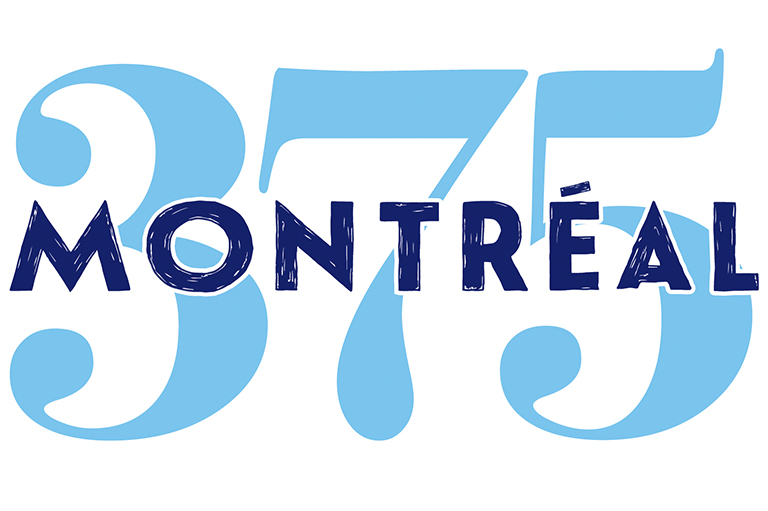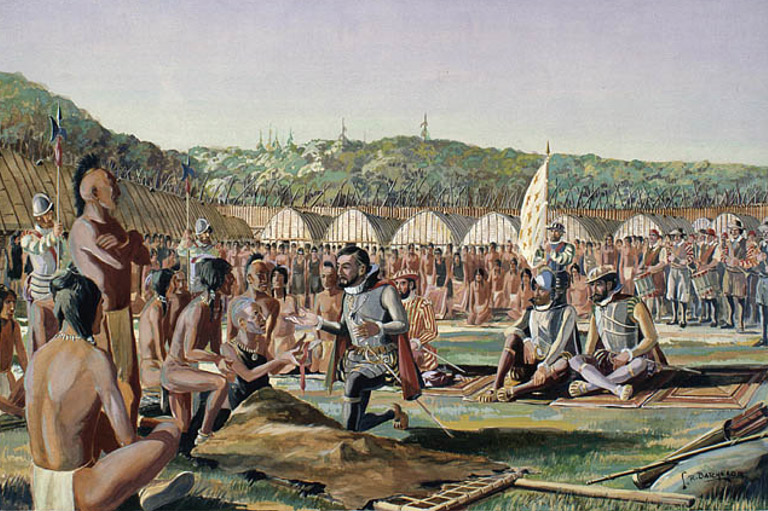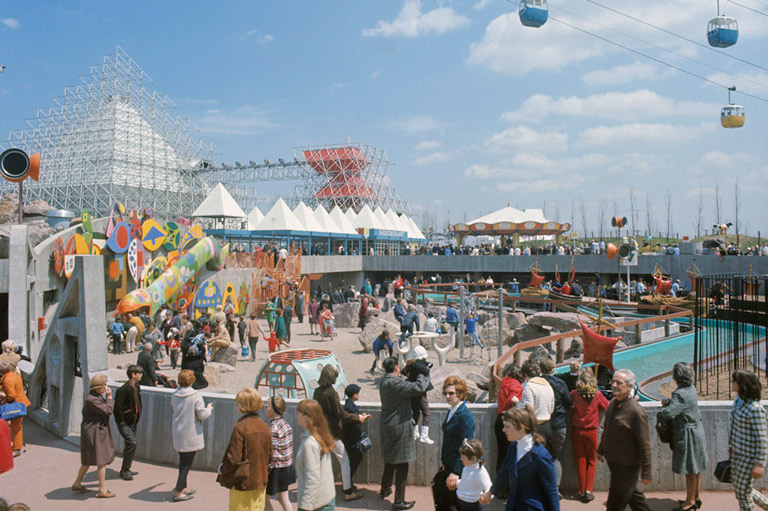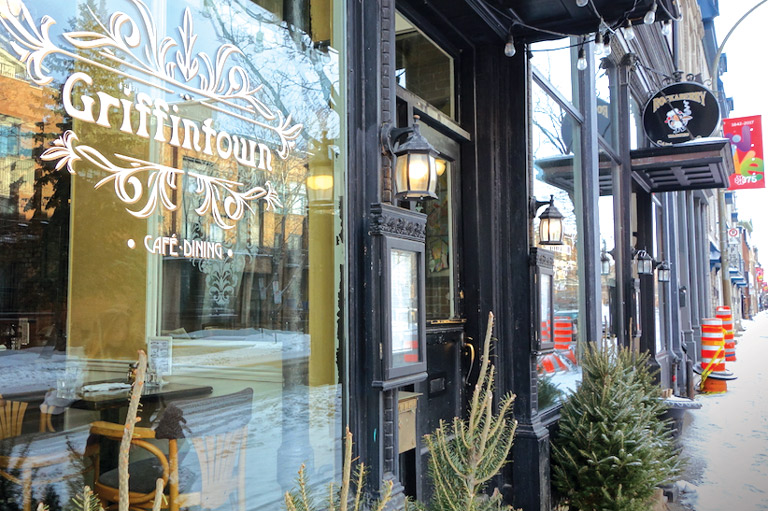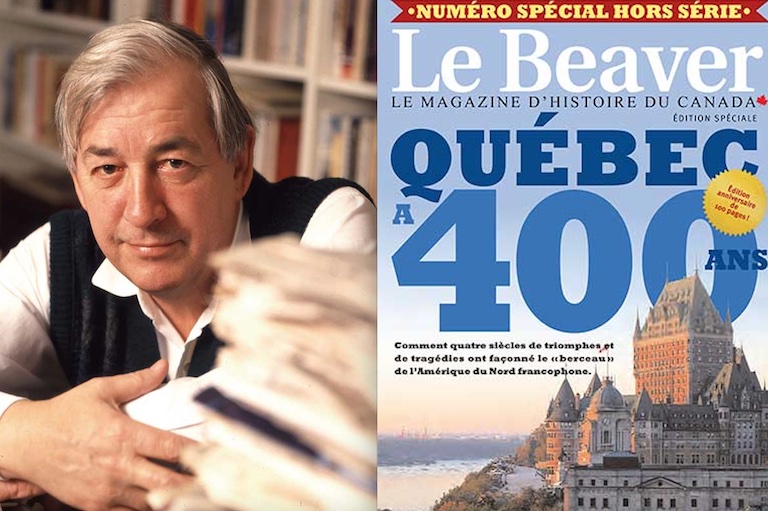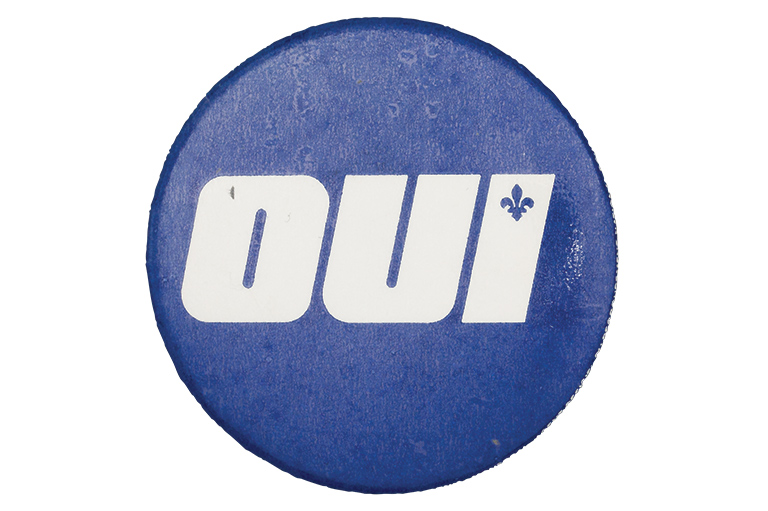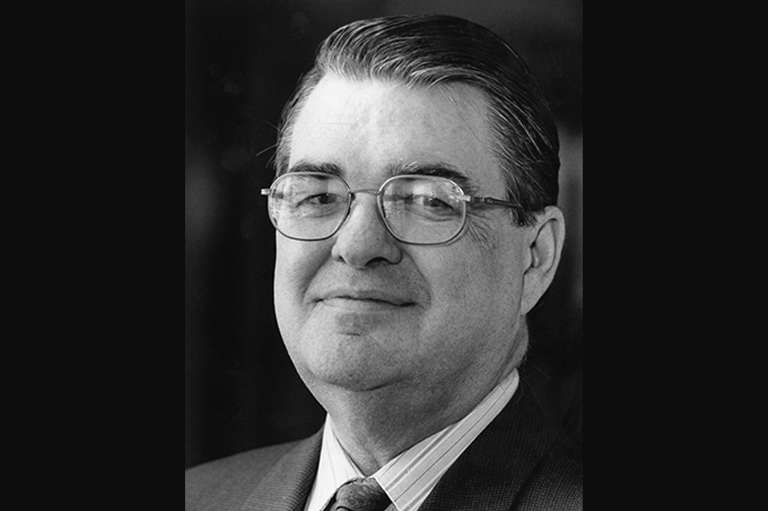Discover a wealth of interesting, entertaining and informative stories in each issue, delivered to you six times per year.
Founding of Ville-Marie
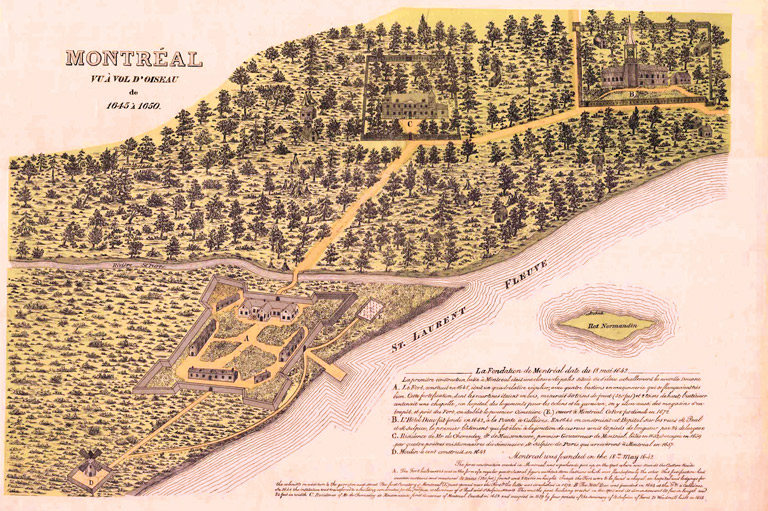
Spring came late to the St. Lawrence River valley in 1642. Not until May 8 had enough ice gone from the great waterway to allow a band of extraordinary people at the little town of Québec to clamber into their boats and head upstream.
Officially the expedition was led by the governor of New France, Charles Huault de Montmagny. But, since the governor considered it a foolish undertaking and would soon be returning to Québec, the real leaders were a pious ex-soldier named Paul de Chomedey, sieur de Maisonneuve, just thirty years old, and the equally devout Jeanne Mance, a nurse five years his senior.
Their goal was to establish a Catholic missionary community on Île de Montréal, some two hundred and sixty kilometres away. It was to be called Ville-Marie, after the Virgin Mary. Sponsored by the Société Notre Dame de Montréal — one of an astonishing number of religious organizations that grew out of the century-long Catholic revival known as the Counter-Reformation — the founders were establishing something quite unusual. Distinguished historian Gustave Lanctot has gone so far as to write, “This is perhaps unique in history: the birth of a town … whose only goal was the glory of God and the conversion of the natives.”
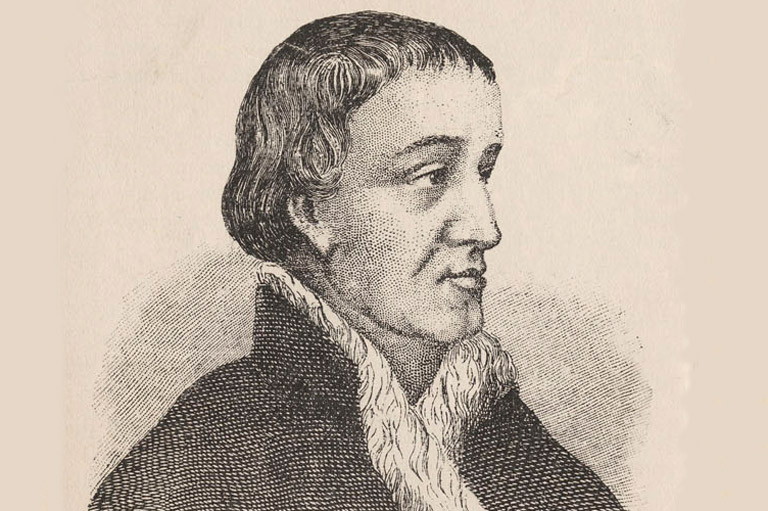
Initially, the venture did not receive the blessing of Governor Montmagny. He urged them to settle on Île d’Orléans instead, because it was closer to the town of Québec and easier to defend from Iroquois attacks. But the society insisted on Île de Montréal because, being a crossroads for many Indigenous nations, it was an ideal spot from which to evangelize. The fact that some of those nations were unfriendly did not faze Maisonneuve:
“My honour is at stake,” he told Montmagny, “and you will agree that I must go up there to start a colony, even if all the trees on that island were to change into so many Iroquois.”
Sign up for any of our newsletters and be eligible to win one of many book prizes available.
Just getting to the island was an act of faith. Progress was slow, for the sails and oars of their small, shallow-draft boats had to fight a swelling current. Nowhere in France had any of them seen a river so vast or forests so dense. They might have paused at Trois-Rivières, the only settlement upstream from Québec City otherwise, come evening, they’d tie in to the rough shoreline and camp.
To this day mysteries cling to the expedition. We don’t know all the settlers’ names. We don’t know how many they were — about forty but perhaps several more, including at least three women and apparently a few children. We don’t know how many boats they had: two, three, or four — it depends on how you read the sources. And, most confounding of all, we don’t know exactly when they arrived at their destination, though it remains one of the most significant dates in Canadian history.
Reaching Île de Montréal took them more than a week. But how much more? Did they arrive on May 17, or was it May 18?
According to the Jesuit Relations — annual reports the Jesuit priests sent to their Paris headquarters — Father Barthélemy Vimont was part of the expedition that May. In the report for 1642, Vimont states flatly that “on the seventeenth of May … Monsieur the Governor placed the sieur de Maison-neuve in possession of the Island.” However, some thirty years later the Sulpician priest François Dollier de Casson, acknowledged as Montréal’s first historian, states that they arrived on May 18.
Vimont was an eyewitness; Dollier, who arrived in New France in 1666, was not.
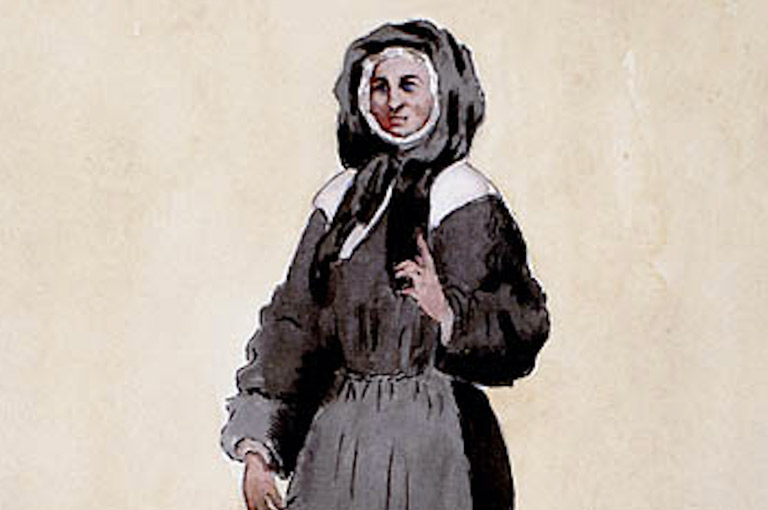
Even so, he had access to certain documents and would have been able to interview some of Ville-Marie’s surviving founders, including Jeanne Mance. Perhaps, in a way, both were right. Perhaps the expedition arrived at the island on May 17 as night was falling; but, rather than attempting the unfamiliar St. Mary’s Current — a stretch of fast and swirling water off Montréal — they remained on their boats. This way, a chancy thrust through these mini-rapids and then an actual landing could be put off until daylight returned.
Their target was a triangular meadow a kilometre or so above St. Mary’s Current. Samuel de Champlain had come across the meadow in June 1611 while looking for a possible townsite and named it Place-Royale. Not only did its twenty-odd hectares seem suitable for crops, it also had some ready-made defences: the St. Lawrence on one flank, the little Rivière Saint-Pierre on the second, and, closing off the third side, a stretch of marshy ground.
Explorer Jacques Cartier had also visited the site in 1535. At that time Indigenous people known as the St. Lawrence Iroquoians were growing crops there. Cartier was received at a village in the vicinity known as Hochelaga. The village was apparently abandoned a few years later. (The St. Lawrence Iroquoians were not part of the Iroquois — also known as Haudenosaunee — Confederacy.)
When Maisonneuve and his companions came ashore, they immediately thanked God for delivering them to so favoured a spot. Mance and another of the women, Marie-Madeleine de Chauvigny de la Peltrie, founder of the Ursulines in Québec, set up a rough altar and decorated it with wildflowers. Father Vimont celebrated the first mass ever said on the island. The old hymn “Veni Creator Spiritus” (“Come Creator Spirit”) was chanted. In his sermon, Vimont — according to Dollier — said: “Look, gentlemen, what you see is but a grain of mustard seed. But it is sown by hands so pious and so moved by the spirit of faith and piety that Heaven must doubtless have vast designs … and I have no doubt that this seed will grow into a great tree, one day to achieve wonders.”
More hymns and other expressions of thanksgiving were a large part of that day. There were no altar lamps, but as evening drew on fireflies were gathered — Dollier says some were caught, improbably, in daylight as well — and they were “hung by threads in a beautiful and marvellous manner.”
But it wasn’t all prayer. Also on the 17th, according to Vimont, or the 19th as Dollier has it, the men set to work cutting long stakes and erecting a rough palisade to defend against the Iroquois.
At first all was tranquil in Ville-Marie. Maisonneuve and his people built a “habitation” — a kind of communal dwelling, with a couple of small rooms set aside for Mance’s hospital. A few outbuildings and a rudimentary chapel were also put up. They planted some crops and extended the palisade. A dozen additional settlers arrived that summer. A small party of Algonquins passed through in July, and some were baptized. The first, a four-year-old boy, was given the name Joseph. Mance and Maisonneuve were named his godparents. “This is the first fruit that this island has borne for paradise; it will not be the last,” declared Father Vimont.
Each morning the settlers received the Eucharist, girding themselves for whatever fate the day might bring in so forbidding a wilderness. The French had anticipated a cold winter and had their quarters chinked as well as they could manage against the elements. But they had not foreseen the effects of a sudden and unseasonable thaw. Just before Christmas, the snow began to melt, the St. Lawrence rose, and water began trickling through the stockade. If water soaked their food or gunpowder stores, the outlook would be dire.
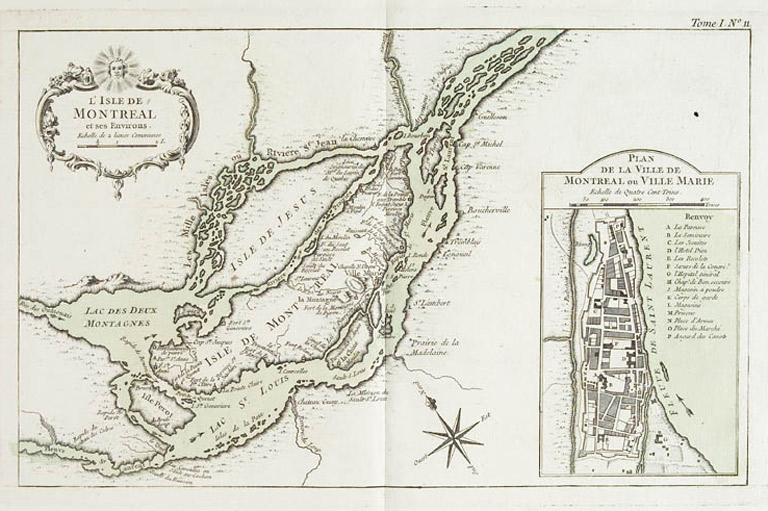
They set to praying with renewed fervour. Maisonneuve ordered a small cross to be placed by the rising water. He swore that if God spared them he would bear a much larger cross up Mount Royal, the mountain looming behind Ville-Marie, and place it there.
Sure enough, on Christmas Day the waters began receding, all the proof they needed of God’s favour. A large wooden cross was duly fashioned, and on January 6, the Feast of the Epiphany, Maisonneuve fulfilled his vow. All the settlers accompanied him as he laboriously shouldered the cross well up the slopes of the mountain, and there it was erected.
The original cross is long gone, but in 1924 the Société St-Jean Baptiste erected a large steel cross at the summit of Mount Royal to commemorate Maisonneuve’s pious act. The illuminated cross remains a well-known landmark today.
At Ville-Marie, the coming of spring brought new danger as the Iroquois learned of the French settlers’ presence. The Haudenosaunee Confederacy, and especially the eastern-most of its five constituent nations, the Mohawk, was at this time well entrenched in the upper St. Lawrence valley. Having effectively pushed out rival nations like the Wendat — or Huron — and the Algonquin, the Iroquois were in no mood to give up what they had won to a new invader.
This time, rather than wait passively in the fort, Maisonneuve led his men outside and into the snow.
Since the French were well armed — they even had a small cannon — the Iroquois avoided frontal attacks. Instead, they started a campaign of attrition, picking off the colonists one by one as they ventured out to tend their crops or chop timber. And so it was that on June 9, 1643, Bernard Berté, Guillaume Boissier, and Pierre Laforest became the first of Ville-Marie’s settlers to be killed.
They were at work some one hundred metres from the stockade when about forty Iroquois emerged from the bush. The three men were immediately killed and scalped; three others were captured and tortured. One escaped the next day and made his way back to Ville-Marie, but the bodies of the remaining two were never found.
Henceforth it was a rare work party that did not include armed guards, but even so the casualties mounted. Morale began to suffer. Some of the more hot-headed among them began grumbling about Maisonneuve’s defensive style of leadership, which they saw as cowardly.
To warn them of imminent attacks, the small colony relied on a pack of dogs led by a female named Pilote. Late in March 1644, the animals began to bark wildly, sensing a war party nearby. This time, rather than wait passively in the little fort, Maisonneuve led his men outside and into the snow. The going was slow, for only a few had snowshoes.
Suddenly the warriors were upon them, and a fierce fight ensued. The French retreated with Maisonneuve guarding the rear. But before he could reach safety he was surrounded. According to Dollier’s account, the warriors parted to allow their chief to step forward and claim Maisonneuve as a prisoner. Maisonneuve had a pistol in each hand, but the first one misfired. The chief leapt at him just as the second pistol fired properly. The chief fell dead, and his shocked companions, rather than pressing the attack, scooped up his body and retreated. Alone, Maisonneuve reached the safety of the fort. From then on, no one questioned his courage — or the need for prudence.
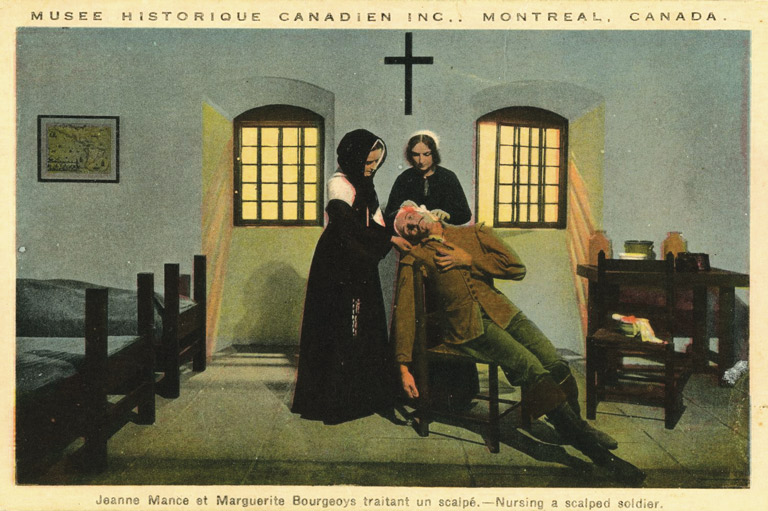
The other enemy, the unpredictable St. Lawrence, remained a concern, and the settlers were soon moving to occupy higher land across the sluggish Rivière Saint-Pierre. The rudimentary hospital Jeanne Mance had established in the autumn of 1642 was transferred to more substantial quarters there in 1645; this was the beginning of today’s Hôtel-Dieu de Montréal, one of Canada’s great health centres. In that year as well, a truce of sorts was concluded between the French, the Huron, and the Algonquin, on one side, and the Iroquois on the other. The people of Ville-Marie also won the right to join the fur trade.
New drafts of settlers dribbled in, and the population slowly increased. There were even a few soldiers. In 1648 the first plots beyond the stockade, in the vicinity of the Hôtel-Dieu, were deeded over to individual pioneers; the fifty-four-year-old Pierre Gadoys became Ville-Marie’s first habitant, farming some sixteen hectares of his own land. Construction was begun on a gristmill.
The truce did not endure. The Iroquois swept through the lands near Georgian Bay, driving out the Huron. Two Jesuit missionaries were among the hundreds who were killed in 1649. Hundreds more sought refuge with the French.
“During the whole of this year,” Dollier writes, “nothing was seen but the coming of Hurons fleeing from the savagery of the Iroquois and seeking refuge with us.” Many of the refugees eventually made their way downstream to Québec, where some of their descendants can be found to this day on the Wendake Reserve. Others were absorbed into the Haudenosaunee nations through adoption.
The terrifying spectacle of so many people on the run served warning that Ville-Marie could expect “the whole shock of the Iroquois attack,” Dollier wrote, “since … they had nothing more to check their conquests further up the river.”
So great was the danger that Maisonneuve ordered everyone back to the fort, and the communal living of 1642 resumed. Mance’s Hôtel-Dieu was closed, or rather its stone building was converted from a hospital to an outpost where armed men were stationed at all times.
But the casualties continued. By 1651, according to the Jesuit Relations, Ville-Marie was reduced to about fifty French, Huron, and Algonquin inhabitants. By the autumn of 1651, the continued attacks had left the normally resolute Maisonneuve near despair. But then Mance intervened. She had some twenty-two thousand livres in hand, the gift of a benefactor in France for the maintenance of her hospital, but she realized that if Ville-Marie fell there’d be no hospital to maintain. She offered the money to Maisonneuve so that he could go to France and enlist help. He accepted the gift, stating that if he did not come back with at least a hundred new people he would direct those remaining in Ville-Marie to give up and return to the motherland.
He was gone for two years. The hard-pressed settlement hung on precariously, fortunate that Maisonneuve had appointed the doughty Lambert Closse as sergeant major in charge of the town’s defences. Sometimes Iroquois blockades on the St. Lawrence cut off Ville-Marie completely from Trois-Rivières and Québec.
Meanwhile, Maisonneuve succeeded in raising even more money in France, which in turn allowed him to recruit a substantial body of new settlers. By the spring of 1653, he had 154 men under contract. They included various tradesmen — a carpenter, a cooper, a gunsmith, a mason, a brewer — and two surgeons.
By the time they were ready to sail in June, nearly fifty of the prospective settlers had bailed out. But the rest, including more than a dozen filles à marier — young women recruited to marry French men at Ville-Marie — were ready to go. Also on board was thirty-three-year-old Marguerite Bourgeoys. Soon to be the founder of the Congrégation de Notre-Dame, to this day an important teaching order, she would have an effect on Montréal’s evolution no less profound than Mance’s. Bourgeoys was canonized in 1982 as Canada’s first female saint.
Maisonneuve’s return voyage was rough. The ship turned out to be old and unseaworthy and had to be sailed back to the French port of Saint-Nazaire. The soldiers on board would have abandoned the enterprise except, as Bourgeoys wrote, “Monsieur de Maisonneuve left all of his soldiers on an island from which it was impossible to escape. Otherwise none would have stayed with us. A few of them tried to escape by throwing themselves into the water.”
It took a month to repair the ship (or perhaps to obtain another one), and it was late September before the ship finally reached Québec, where it promptly ran aground and began springing new leaks. It had to be burned in the river. Meanwhile, disease on board had taken the lives of at least eight passengers. Just over a hundred survived, but they were enough. After a delay of several weeks — the time it took to build new boats to take the settlers upriver — the company arrived at Ville-Marie in November of 1653, tripling the town’s population.
Dollier’s history records the impact the newcomers would have. “As soon as the company — arrived, work was begun on the hospital’s chapel and the enlargement of its buildings,” he writes. The filles à marier married and were soon starting families. Unlike the filles du roi who started arriving in New France in 1663 for the same purpose, the filles à marier did not receive a dowry from the king.
“Notwithstanding the work of building, the cultivation of the soil, and these marriages,” Dollier continues, “everyone was so much on the alert that the enemy found great difficulty in doing us any harm. From that time on, we began to instil in them a degree of fear which checked them from interfering with our enterprise in the way they had done before.”
Dollier was being optimistic, as it turned out, for the threat of Iroquois attacks lingered for a few more decades.
In 1665 the 1,100-strong Carignan-Salières Regiment arrived from France while Maisonneuve — who had for some years been at odds with authorities in Québec — was recalled to Paris. The presence of the French soldiers led to a peace agreement in 1667, but it was a precarious peace, strained by conflicts tied to the expansion of the fur trade by the French and the English.
In 1687, a large French force entered what is now western New York State, burning villages belonging to the Seneca, an Iroquoian nation allied with the English, and destroying vast stores of corn — about 1.2 million bushels.
In revenge — and with the encouragement of English colonists, since England was now at war with France — a large band of Iroquois warriors attacked Île de Montréal at the village of Lachine in 1689. (Lachine had been established about fifteen kilometres upstream from Ville-Marie, above the Lachine Rapids, in 1667.) About two dozen French were killed and sixty or so kidnapped.
Only with the Great Peace of Montréal, signed in 1701 by the French and some forty First Nations, including the Haudenosaunee Confederacy, did the fighting essentially end.
Consequently, Ville-Marie flourished. Although the community’s religious vocation remained strong, other preoccupations — chiefly trade and farming — gained prominence. The name Montréal was already displacing Ville-Marie, as if to further distance the community from its religious roots. It didn’t much matter: Whatever its name, the community would survive. In 1992, the Pointe-à-Callière Museum — named after Montréal’s third governor — was established on the same spot where the city’s founders had celebrated their first mass.
From its fragile beginnings three hundred and seventy-five years ago, Montréal has grown into a diverse metropolis of some four million people. Throughout 2017, its rich history will be celebrated through historical re-enactments, public concerts, street theatre, and much else besides. It will be quite a show, for nowhere else in Canada do French and English language and culture so vibrantly interact.
As Father Vimont predicted almost four centuries ago, the community of Ville-Marie has evolved from a seed “into a great tree, one day to achieve wonders.”

The Iroquois Perspective
For the Haudenosaunee Confederacy, Montréal 375 is no cause for celebration
Imagine strangers suddenly arriving at your home and claiming it as their own. Pushing you aside, they use violence to make you accept this new reality. And now imagine having this dark moment publicly celebrated and commemorated.
Such is the reality for the Haudenosaunee Confederacy when it comes to marking the 375th anniversary of the founding of Ville-Marie, now Montréal.
“To me it’s the colonizers’ way of celebrating something that is very atrocious, in what I see as the theft of land, the theft of culture, and dignity, and humanity of the [Haudenosaunee peoples],” said Hazel King, director of the Haudenosaunee Development Institute, the official voice of the confederacy on matters of land jurisdiction and development.
Early history books often portrayed the Haudenosaunee, also known as the Iroquois, as the villains in the story of New France — a constant threat to the French colonists and their Huron and Algonquin allies. Indeed, one of the first things Samuel de Champlain did after founding Québec in 1608 was to join his new Indigenous partners in 1609 in an attack on the Iroquois at Lake Champlain.
King says this stereotype of “Iroquois-as-villains” ignores the complexity of the relationships that existed between Indigenous peoples prior to contact with Europeans. And it doesn’t address the ulterior motives of the colonizers, who benefitted from pitting various Indigenous peoples against each other.
“That’s what the French were after — it was the land and it was the resources,” she said. “It’s always been the land and the resources. And if they can have the Indians fighting each other — and if they can incite wars between the Hurons and the Iroquois and so on — to me, the settlers have always been able to manipulate our people.”
King encourages Canadians to use Montréal 375 as an opportunity to learn the history of the Indigenous peoples who lived in the region before the founding of Ville-Marie.
“We know the history of the land in a different perspective than is being taught in schools,” she said. “There will be many, many children in schools that will be … looking at the history of Montréal for 375 years. But what do they know of the history before that time?”
Themes associated with this article
Advertisement


